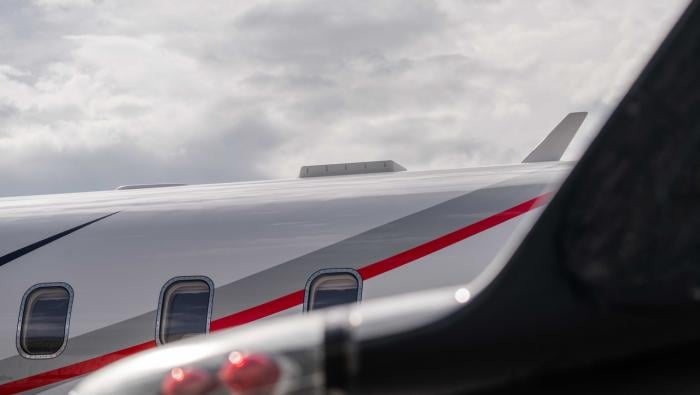The number of tools needed for a modern business jet maintenance shop and the hassles of keeping track of their whereabouts and calibration status seem to climb every year. FAA inspectors are increasingly concerned about calibration of even the simplest tools, and unless an operation has its own tool crib specialist, there’s a good chance that tools could easily go missing or out of calibration.
3M and its Highjump Software subsidiary, working with maintenance provider and manufacturer Nordam, are running a pilot project for a system to track tool status and the tools themselves. Using RFID (radio frequency identification) tags and strategically placed readers, the 3M Highjump system can easily find the expensive tool that Joe Technician accidentally left on the bench instead of returning to the tool crib. The Highjump system can also help ensure that tool calibration dates aren’t missed and tell the boss who checked out the tool and didn’t put it back.
3M is installing the tool-tracking system at one of Nordam’s composites repair facilities in Tulsa, Okla. The collaboration is the first product resulting from an agreement that Nordam and 3M announced last year, in which the two companies are working to create solutions to challenges in the manufacturing and maintenance industries.
“From design to installation takes around four months,” said Joel Graf, market business manager for asset tracking and management for 3M’s Aerospace and Aircraft Maintenance division. The system will track approximately 400 composites tools, mostly forms, at the Nordam facility.
The purpose of the pilot test is to compare the 3M system with Nordam’s original tool-tracking system to measure the improvements in efficiency and reductions in cycle time for composites repairs. Once the test is done, probably by last month, according to Graf, the 3M team will analyze the data and deliver the results in a white paper. The paper should help illustrate the return on investment available from the 3M system.
The 3M system uses both RFID and bar code tags, whichever happens to be most effective for each tool and the way it is used. Tools that are used for set ups in heavily trafficked areas where many technicians’ work will be tracked using fixed-portal readers, which are sensors installed in a gate-type configuration. As technicians walk through the portal, the sensors automatically read the data on the tool’s RFID tag. Portable readers are used where fewer tag reads are needed, with less frequently used tools, for example, that don’t move around much.
In the Nordam pilot project, the Highjump software is feeding tool information into Nordam’s existing computer system, for tool status updates. Highjump can be adapted to deliver status information such as calibration history, if a company doesn’t already have software for that purpose.
The 3M tool-tracking system is not for small companies with few tools. “If you’re medium to large,” said Graf, “the value proposition becomes strong. It’s a complicated process to manage effectively.”
3M is also developing RFID tags for aircraft parts. The goal is to attach information about the part to the RFID tag so technicians can look up that part’s history without having to dig through mountains of paperwork. The first project under way for parts tagging is adding RFID tags to Eastern Aero Marine lifejackets. An airline could use this system to do a quick scan of an airplane to see if the correct number of lifejackets are on board and whether they are all within their allowable service life. “You can scan the airplane quickly,” Graf said.







